Key in a search term below to search our website.
Key in a search term below to search our website.
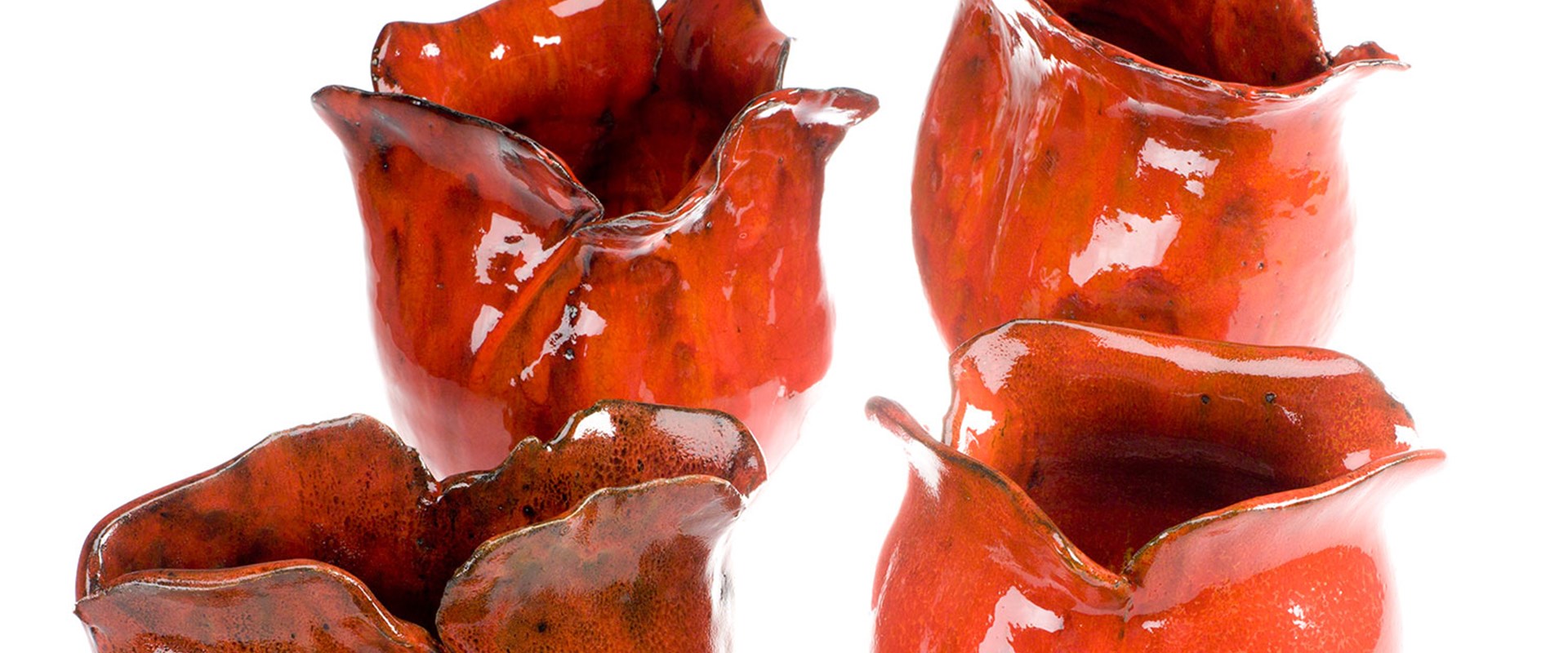
These five sculptured earthenware blossoms with their brilliant orange-red glazes recall the poppies of Lar Valley in Iran. They are an artwork by ceramicist Maryam Salour. Pottery is a craft with a long and rich tradition in Iranian history. Deeply rooted in the place of her origin, Salour chose the poppies to express her intimate view of the country’s beauty.
Date
2009-2010
Made by
Maryam Salour (b.1954)
Made in
Tehran, Iran
Made from
Glazed earthenware
Dimensions
Height 150-177mm
Museum reference
On display
Inspired by Nature, Level 5, National Museum of Scotland
Did you know?
The Latin name for the Iranian or Scarlet Poppy is Papaver bracteatum.
“I found myself exposed not just to a normal valley, but to a field of thousands of stunning fiery red poppies....- Maryam Salour
To see the poppies in fine detail, zoom in on the image above. Use the controls in the bottom right hand corner of the image to zoom in and out, or click or scroll in and out using your mouse.
Not far from Iran’s bustling capital Tehran, the Lar Valley is situated, enclosed into the steep rugged rocks of the Elburz Mountains and overlooked by the legendary snow-capped Damavand peak. Where the Lar River cuts into the slopes, and crosses the plains the dry hillsides turn green, intermingled with the colours of seasonal flowers.
This landscape inspired Maryam Salour’s ceramic poppies. She remembers the moment when she reached the valley on a walking tour in 2005:
"I found myself exposed not just to a normal valley, but to a field of thousands of stunning fiery red poppies. The mesmerizing scenery that was laid out so beautifully before me, very gradually and I must say unconsciously, lifted me up and flew me into it.
"I can’t tell how long it took me to become myself again, but when I came back from this astonishing journey, I realized that I wasn’t standing there looking at them from above anymore, but my soul had become one of them and was amongst them; I had become a poppy."
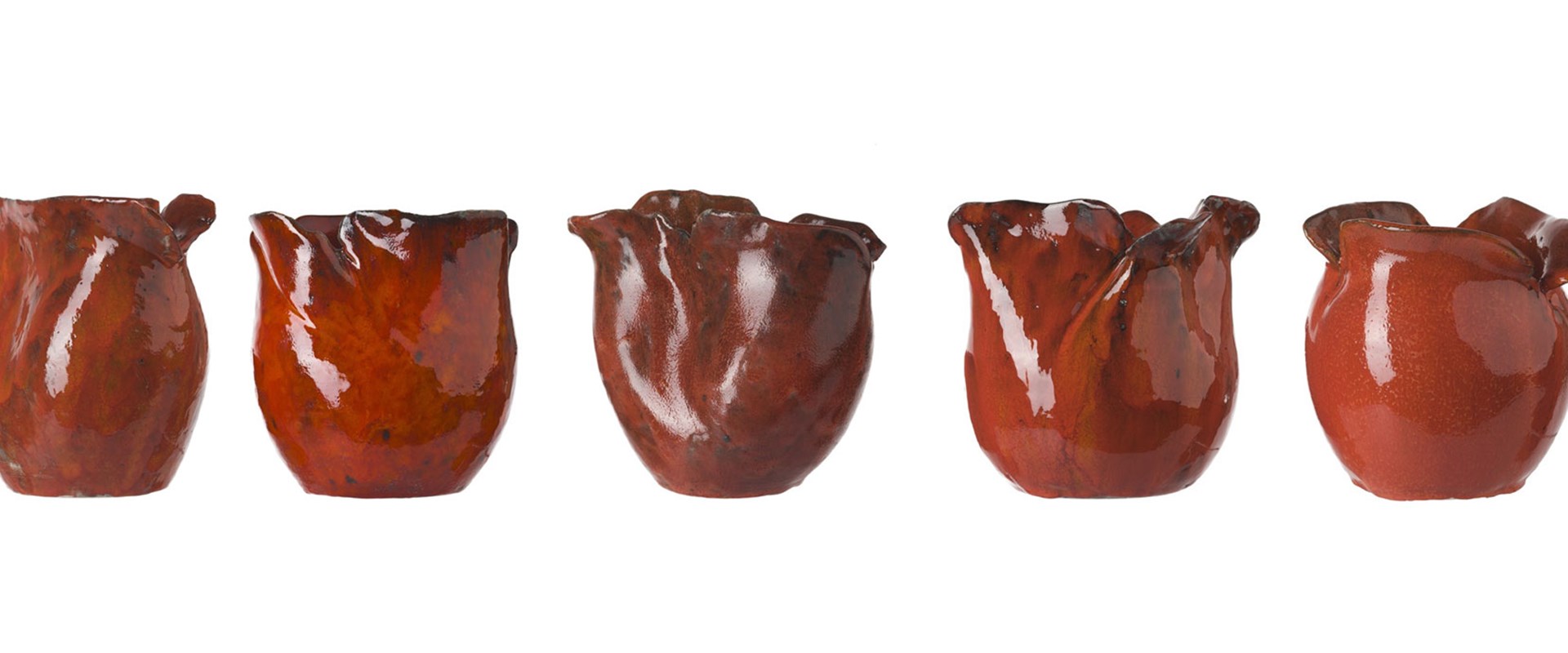
When Maryam Salour was planning her work for the Eighth Ceramic and Glass Biennial of Iran in 2006, she could not think of anything more fascinating than reviving the valley of poppies, to share her experience with the audience.
But how to recall the poppies of Lar?
Fire, earth, water and air – they are not only the four classical elements, but also a potter’s basic materials. Working on the potter’s wheel, Maryam Salour formed the body of the poppies out of a lump of white clay before she cut the upper part freely in petals.
As there are no two similar blossoms in nature, Maryam Salour varied the bodies – reaching from flattened to bulbous ones, with constricted or heavily curved petals. Through the oil-spot effect of her bright orange-red glazes, producing a fine net of leaf-veins, she added texture to the surface. In this way, her sculptures evoke the poppies as they bloom and fade.
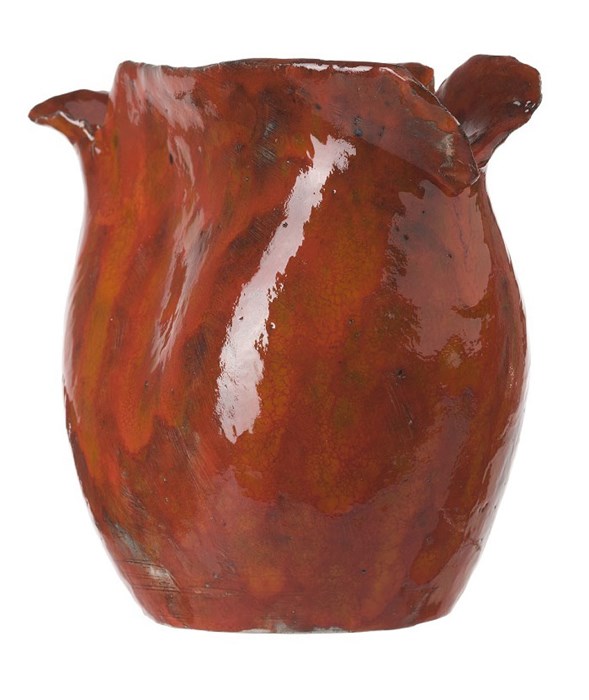
Above: Oil spots on the surface of the ceramic.
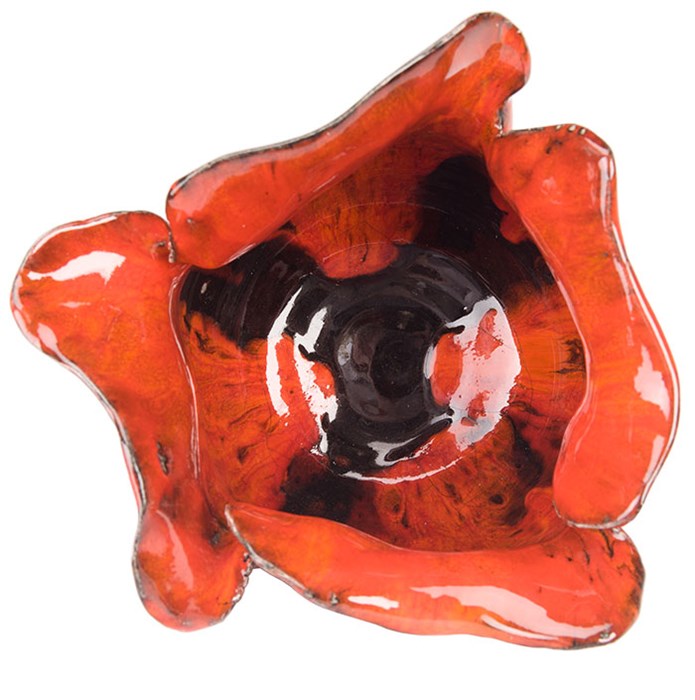
Above: Calyx of one of the Valley of Lar poppies
Maryam Salour is preoccupied with the metamorphosis of the mineral world. The clay, turning into ceramic during the process of firing, reminds her of these processes of change in nature. The outcome of the overlay of thickly applied glazes – uneven surfaces, pinholes, bubbles and craters – is left to the unpredictability of fundamental forces.
Flowers are common motifs in Iranian art to decorate the surface of objects. Usually embedded in foliage they appear in all media – carved in wood and stone, woven into textiles or painted onto ceramic tiles.
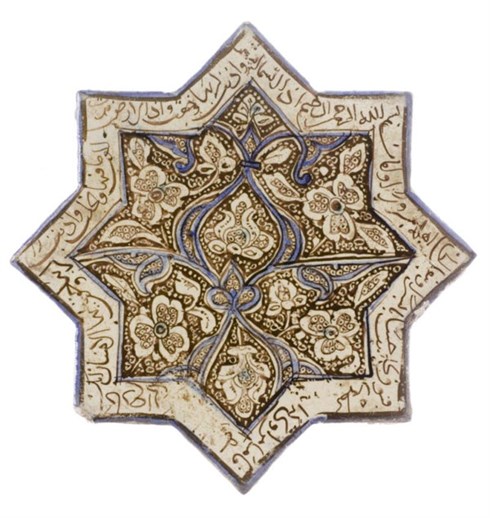
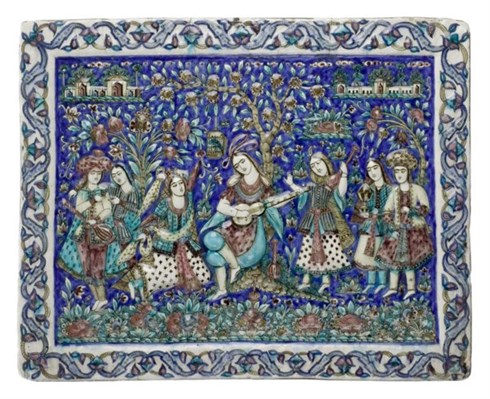
Above: 13th-century lustre star tile with three-lobed blossoms in a radial pattern and 19th-century wall tile with a garden scene and roses along the bottom edge. You can see these wall tiles in the Artistic Legacies gallery.
When she formed the poppies, Maryam Salour transformed a traditionally two-dimensional motif into sculptures. Modelling elements of surface decoration in the round is a feature of contemporary Iranian art. You can see another recently acquired modern artwork, a sculpture by Parviz Tanavoli, one of Iran’s most renowned artists, on display in Artistic Legacies gallery. With this fibreglass cast ‘Standing Heech’, Tanavoli (born 1937) gave space and movement to Persian script.
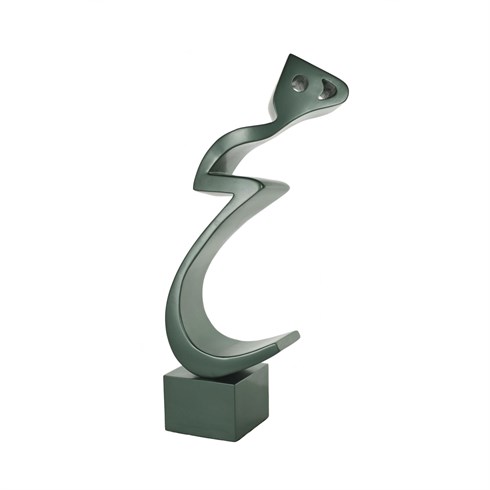
Above: ‘Standing Heech’ (edition 18/25), by Parviz Tanavoli, 2007. Acquired with the support of Charles Pocock and Meem Gallery.